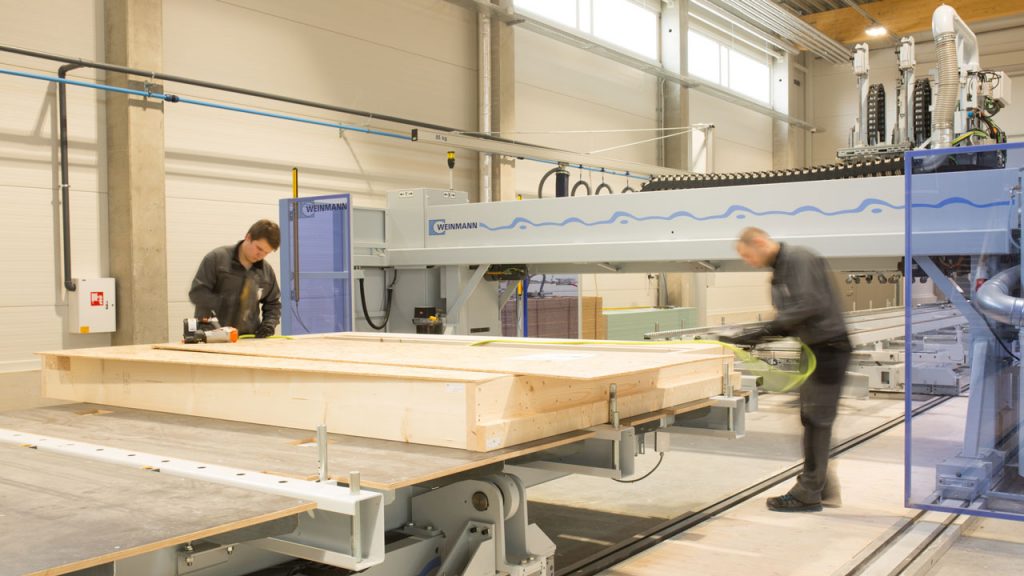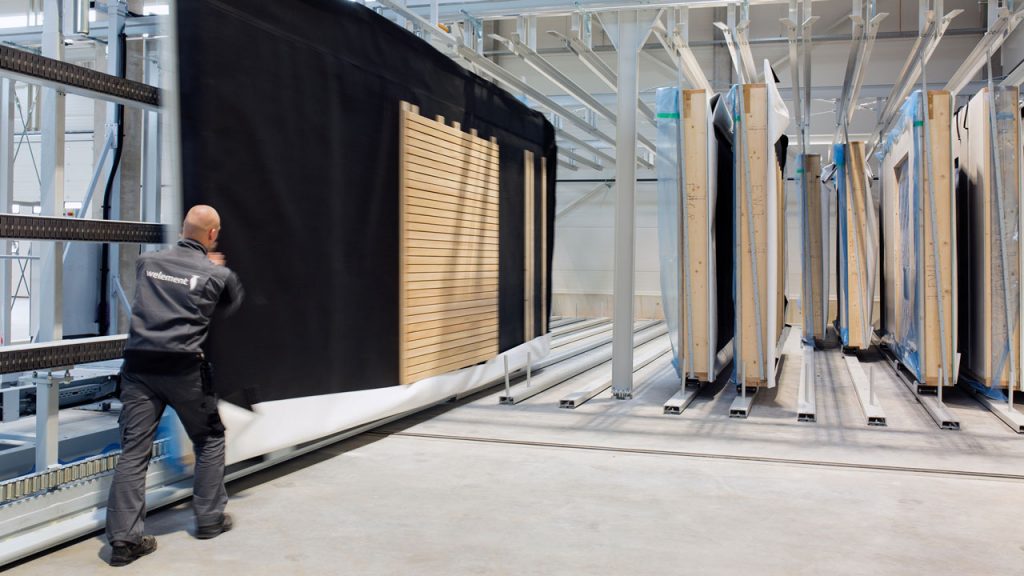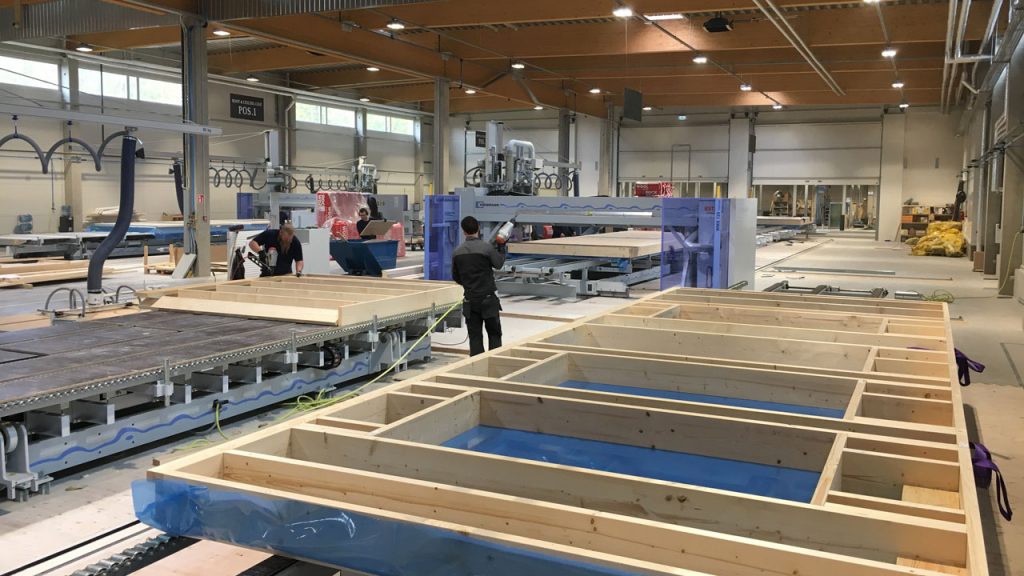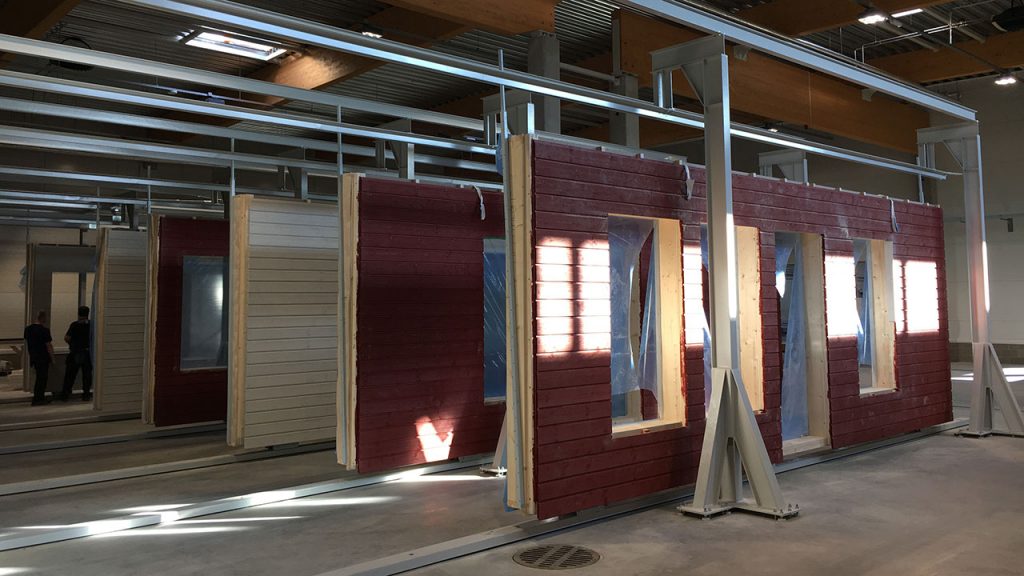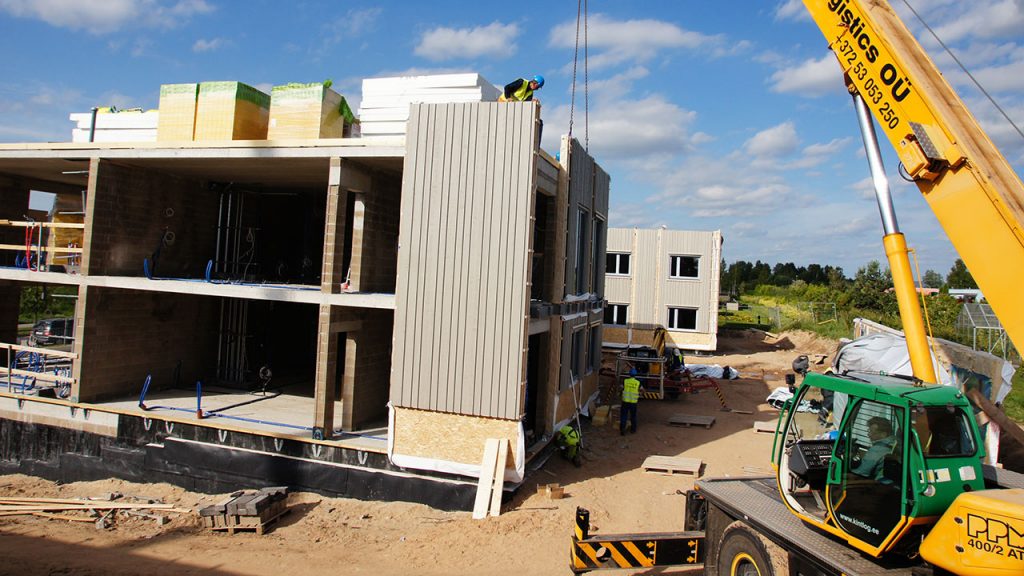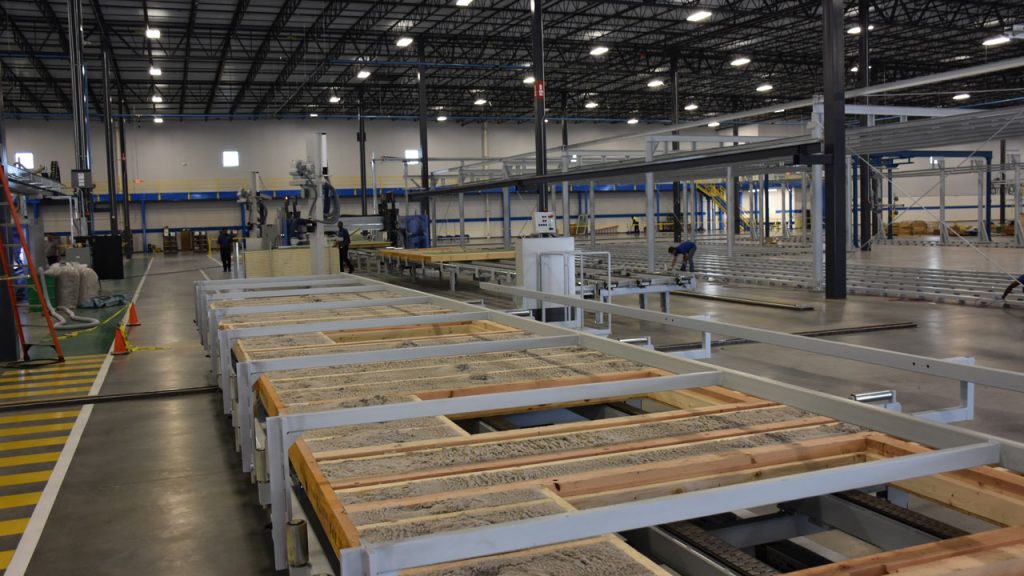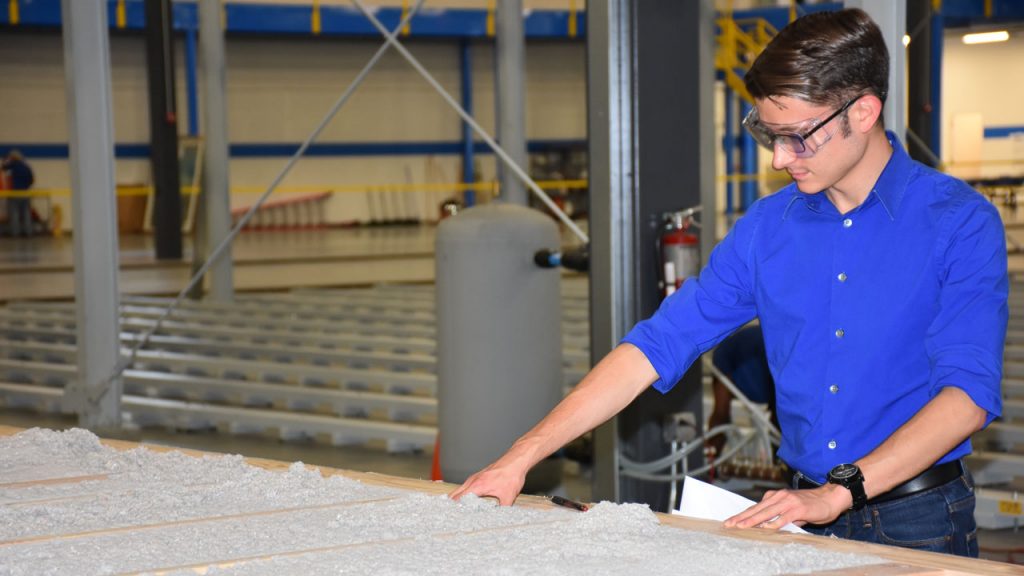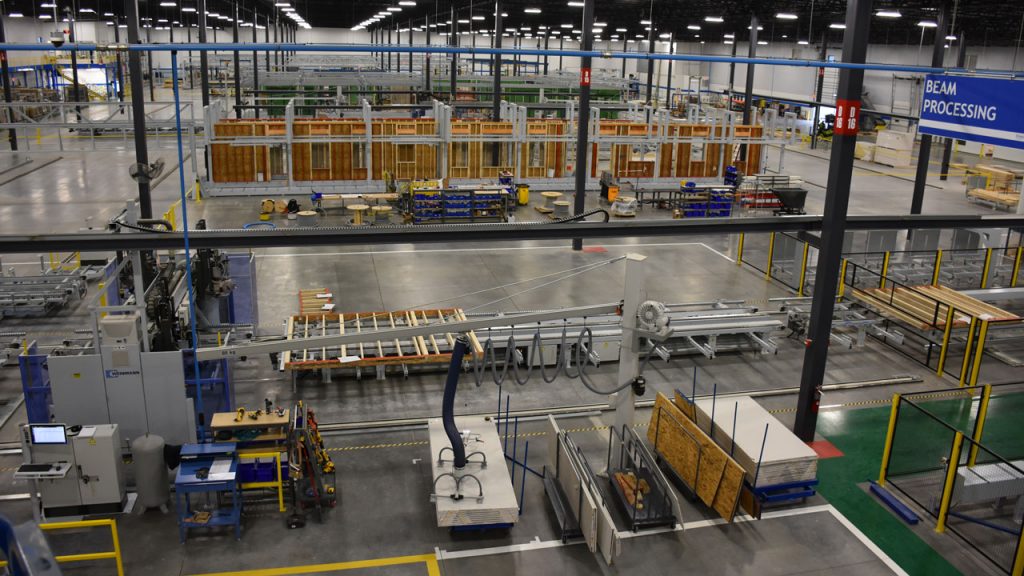US FOCUS: PIONEERS IN THEIR OWN COUNTRY
ALTHOUGH THE MARKET SHARE FOR TIMBER CONSTRUCTION IN THE US IS ONLY JUST UNDER 100 PER CENT IN MANY INDUSTRIES, BLUEPRINT ROBOTICS, BASED IN BALTIMORE, HAS ENTERED LARGELY UNCHARTED TERRITORY; USING MODERN AUTOMATED PRODUCTION TECHNOLOGY WITH A HIGH DEGREE OF PREFABRICATION FOR CLOSED ELEMENTS, A STANDARD IN THE TIMBER MARKETS OF GERMAN-SPEAKING COUNTRIES.
“Weinmann can completely cover our requirements with its processing machines.” Sascha Bopp, Managing Director – Blueprint Robotics. [From an article published in Mikado magazine, issue 12/ 2017.]
USA: STARTING FROM SCRATCH
In the United States, single and multi-family houses are traditionally produced using a timber “platform frame”. The production technique remains largely manual with a low level of prefabrication, even if production is relocated to factories. This traditional method is still in use despite chronic staff shortages, high wages and a demand which has been steadily rising again since the economic crisis.
INCREASING THE LEVEL OF PREFABRICATION AS A PROBLEM SOLVER
Founded in 2015, Blueprint Robotics consisted of an investor, a computer and an idea; providing builders in the USA with modern timber frame elements, manufactured using European production methods and with a high level of prefabrication.
“Our market study indicated that such an approach would immediately solve several problems that builders encounter, such as the shortage of staff in the construction industry, long construction times and escalating costs,” explains Co-founder Sascha Bopp. “Builders” in the USA are rarely private end consumers; they are usually professional builders that develop properties according to market considerations, build them and then sell to the end customer. The fledgling company developed a tailor-made concept specifically for this clientele that included a high level of prefabrication, a guaranteed completion date and a fixed price. In addition, precise machined fabrication guarantees a consistently high standard of quality: “Therefore, our elements are cheaper for the builder because they carry less risk.”
MODERN PRODUCTION USING GERMAN TECHNOLOGY
The next step for Blueprint Robotics was to build a vast production hall production hall in Baltimore, equipping it with Weinmann production lines. “This machine manufacturer from Lonsingen, Germany, can completely cover our needs thanks to its broad spectrum of processing machines,” says Sascha Bopp. “The fact that the company has teams all over the world means it can also guarantee machine assembly in the United States. It also has good references: We approached several companies in Germany, all of whom recommended Weinmann as a premium manufacturer.”
“This machine manufacturer from Lonsingen, Germany, can completely cover our needs thanks to its broad spectrum of processing machines. The fact that the company has teams all over the world means it can also guarantee machine assembly in the United States. It also has good references: We approached several companies in Germany, all of whom recommended Weinmann as a premium manufacturer.” Sascha Bopp, Managing Director – Blueprint Robotics.
Last but not least: “We negotiated with Weinmann Managing Director Hansbert Ott, and he proved himself to be a trusted business partner with integrity. This is of great importance when you’re dealing with such geographical distance and when so much money is in play. “You only have to look at the equipment in the production hall to see that the American firm has invested a tidy sum. Taking up the majority of the hall are three automated production lines for wall production, which include a frame work station, eight further stations and three WMS 150 multifunction bridges. In addition, there is a roof and a ceiling production line with several work tables and two WMS 150 multifunction bridges.
AUTOMATIC CELLULOSE BLOW-IN PROCESS
One of the special features of the Baltimore plant is one of the multifunction bridges: the world’s first Weinmann WMS 150 blowTEC with an integrated blow-in plate. It allows the company to blow loose insulation materials into their timber frame constructions fully automatically, efficiently and with a final visual inspection at the open element. The company exclusively uses cellulose as an insulation material.
“We didn’t know how the Americans would take to this insulation material, but up to now every customer who has seen the blow-in process wants to use it,” says Bopp
“The customers see ecological insulation and better insulation performance as an advantage in comparison to typical wall constructions in the United States. Accurately milled timber connections and details engineered with precision provide the impression of a higher level of quality.”
“When customers come to us and see how we manufacture our products, they often say that they can’t match what we are doing using manual processes. It is also essential for the customers that their houses are assembled ‘fully customised’ at the construction site. They want a tailor-made, complete service. The production plant in Baltimore must therefore be flexible.”
However, in this context, “complete” is not to be confused with “ready-to-use”. Blueprint Robotics usually provides waterproof building shells. Facades and interior fittings are the responsibility of the builder.
“When customers come to us and see how we manufacture our products, they often say that they can’t match what we are doing using manual processes. It is also essential for the customers that their houses are assembled ‘fully customised’ at the construction site. They want a tailor-made, complete service. The production plant in Baltimore must therefore be flexible.” Sascha Bopp, Managing Director – Blueprint Robotics.
NO NEED FOR A MARKETING BUDGET
Secured in May 2016, the plant in Baltimore has been in operation since November of the same year. The commissioning process largely went without a hitch.
“However, it was not as simple as we initially thought,” explains Bopp. “Before you can start producing, you have to learn a lot. But the plant is running so well that we haven’t had any growing pains. “The demand also leaves no reason for complaints. It did not take long for the new company to far exceed its initial potential capacity: “We don’t have to look for customers; the customers will find us,” he says, summarising why the marketing budget was slashed to zero after a few months. This is why Blueprint Robotics already has full order books just over a year after its founding. For the time being, the company is limiting itself to single-family homes and terraced installations. In the future, it also plans to go into multi-story residential constructions in Baltimore, where it can utilise the capacity of the production system more efficiently.
KEY CHALLENGE: NO TRAINED STAFF
This is precisely the reason for the fledgling company’s “growing pains”. For the most part, these difficulties concern just one question: “Are we learning fast enough to be able to implement our potential?” At the moment, the company is still struggling with “bottlenecks at all levels”. These bottlenecks are not so easy to solve as their root cause is a lack of trained staff.
It all starts in the work preparation phase: “As there is no one in the USA with a comparable work preparation process, it is difficult for us to find employees with CAD knowledge in the timber construction industry.” For this reason, the company is currently depending on the Bavarian town of Kolbermoor. There, experienced and aspiring timber construction engineers from Rosenheim University of Applied Sciences concentrate on work preparation for projects in the USA. The solution is long term in production and assembly, sectors in which more than 70 of the 110 Blueprint Robotics employees currently work. “The problem is that we are starting virtually from scratch here. This means a long learning process for our staff and for the company. The aim must be to develop operational efficiency and fully exploit the capacity of our production plants.”
Once this has been achieved, it is only a matter of time before Blueprint Robotics Inc. builds its next plant, which in turn will increase its skill base. The US market offers huge potential for this and there are currently no comparable competitors. ■
